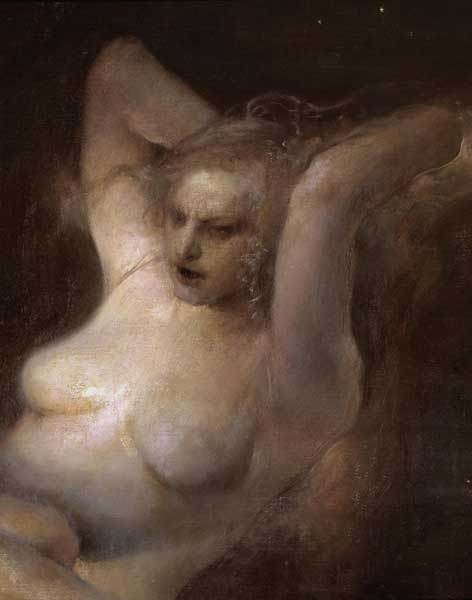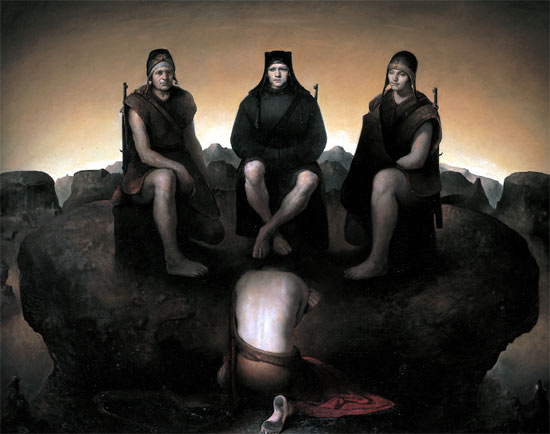-
Kitch
Kitsch is never ironic.
In kitsch, all human beings are rendered with respect
– regardless of age and social status.In a kitsch composition, human beings shall have contact.
If your foremost goal is originality, then you are no longer making kitsch.
Kitsch seeks intensity, not originality.
The goal is to approach the best of the old masters as closely as possible,
especially the Greek hellenism (300 b.C – 100 A.D.)
and the Baroque Renaissance (1500-1670).A kitsch creator seeks to
develop his skill
rather than give priority to the new.A kitsch creator does not dictate nature,
he studies it.A kitsch creator is dissatisfied with
his lack of knowledge.For a kitsch creator all masters are contemporary.
Making something “new”
is for a kitsch creator embarassing,
but as Aristotle says:
a story can be good even though it is new.For a kitsch creator, the standard of “development”
is if he has reached the standard of previous masters.
And even if they are surpassed,
he will never loose respect.The hellenistic idea of beauty
is
a dogma and not a religion.Because kitsch is not built on religion
(how one shall believe and feel)
but skill,
it is consequently dependant upon dogmas.Sentimentality is positive (Rembrandt) – sentimentalism is negative (Bougereau).
Sentimentalism is the enemy of sentimentality
because it harbors irony.
A work cannot become sentimental enough
– “too much” is really too little.
Ilja Repins “Ivan the Terrible”
is a sentimental painting.Morality is positive,
because it is built on humanism.
Moralism is negative.The skill of the hand
is the accompanying friend
of the head.Skill,
not “honesty”.Comparison is the only way
to understand quality.
Compare Picasso and Rembrandt:
time is no excuse.“Our time” and “originality”
are folklore,
and a hindrance.The longing to elaborate his own melancholy
through handcraft
is the quality of the kitsch creator.A kitsch person has lived many times,
he cannot betray his memory.The intensity in the perception of nature
makes it a magical common property.
When you try to make it better than when you first saw it,
then you are approaching high kitsch.There is a connection between you and the great works you admire.
You identify with those who did not follow
the metaphysics of the time.Painterly miracles give the most joy.
A kitsch creator wishes to see substance illuminated,
pure colors are but opaque darkness.If you hold back
out of concern for the demands of the time,
then you are no longer making kitsch.Kitsch will always be in conflict with
the university, the state and the bureaucracy
– because it represents human vulnerability.High kitsch exposes the clichèes of power.
The magician shall not conquer the world,
he shall only play with it.
So also with high kitsch.A good drawing
without a natural rhythm
is not a good drawing.Kitsch creator!
You are allowed to take pride in your work.The kitsch creator sees in suffering
a local problem
which is given a universal content.The kitsch creator
goes into the cave to search
for a little, dark flame.In a kitsch work
the surface reveals everything,
it is the only way to the undertext.A kitsch work always smells
of sweat.A kitsch work shall be seen with the eyes,
not with the ears.Time is incidental, quality is everything;
time is nothing.
The kitsch creator looks to the old masters
not because they are old,
but because they are masters.The goal is
the immortal master work,
not the sketch.
The kitsch creator lives only for the master work.The three stages of kitsch:
The egosentric
– look at me.
The geosentric
– look at what I can do.
The heliosentric (which can only be reached through the geosentric)
– look at what I have revealed.Kitsch
is
humanity
sensuality
light– Jan-Ove Tuv and students
Log in to reply.


